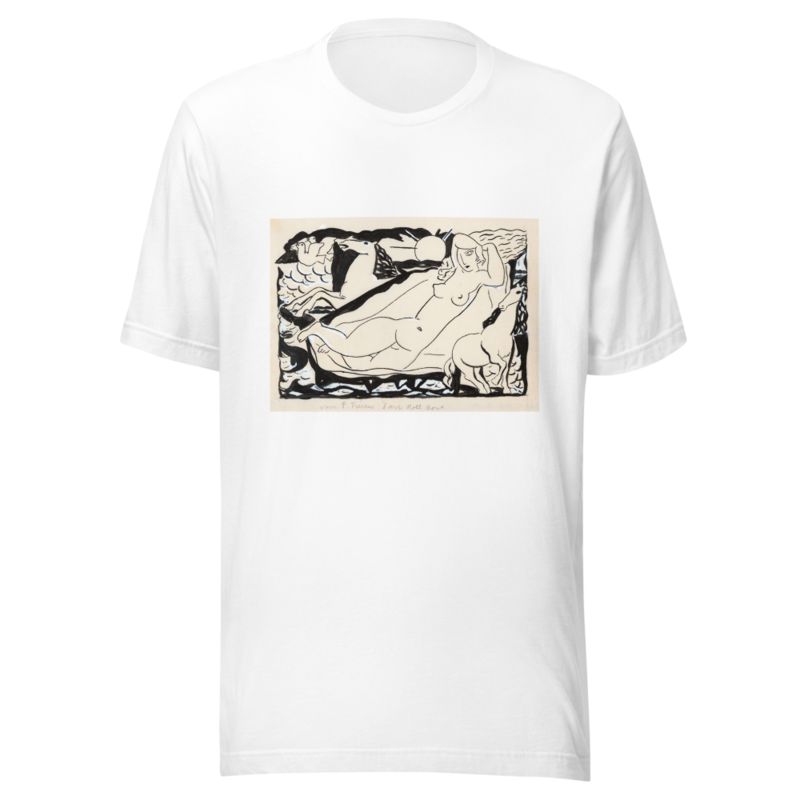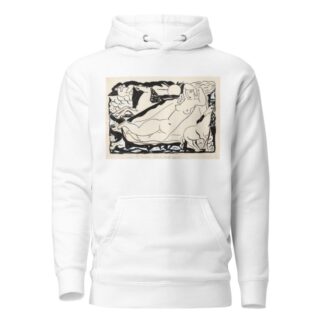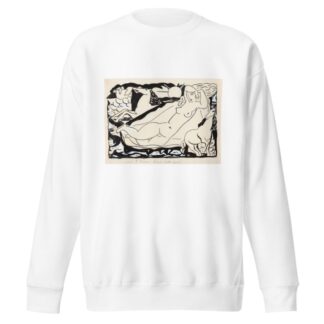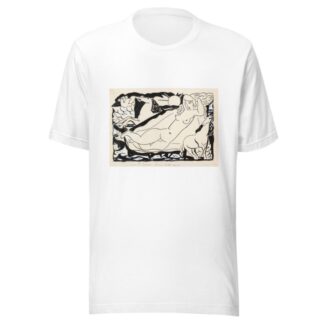Description
Venus Vignet voor boek ‘L’art Hollandais contemporain’ van Paul Fierens; liggend naakt met daarbij afgebeeld twee paarden en twee duiven by Leo Gestel printed on a T-Shirt
About the T-Shirt
Regular fit
Standard length, the fabric easily gives into movement
Casual wear
A classic, everyday option loved by our customers
Side-seamed
Constructed by sewing two parts together, creating a fitted look
The Unisex Staple T-Shirt feels soft and light with just the right amount of stretch. It’s comfortable and flattering for all. We can’t compliment this shirt enough–it’s one of our crowd favorites, and it’s sure to be your next favorite too!
- Solid colors are 100% Airlume combed and ring-spun cotton
- Ash color is 99% combed and ring-spun cotton, 1% polyester
- Heather colors are 52% combed and ring-spun cotton, 48% polyester
- Athletic and Black Heather are 90% combed and ring-spun cotton, 10% polyester
- Heather Prism colors are 99% combed and ring-spun cotton, 1% polyester
- Fabric weight: 4.2 oz./yd.² (142 g/m²)
- Pre-shrunk fabric
- 30 singles
- Side-seamed construction
- Tear-away label
- Shoulder-to-shoulder taping
- Blank product sourced from Nicaragua, Mexico, Honduras, or the US
Leo Gestel (1881- 1941)
Leo Gestel was a Dutch painter. His father Willem Gestel was also an artist. Leo Gestel experimented with cubism, expressionism, futurism and postimpressionism. Along with Piet Mondrian he was among the leading artists of Dutch modernism.
Leo Gestel ‘Herfstdag te Nijmegen . Autumn day at Nijmegen, 1909
Gestel was first instructed in art by his father, Willem Gestel, the director of an art school, and his uncle, Dimmen Gestel, who had painted with Vincent van Gogh. Due to financial problems Gestel created advertisements (e.g. for Philips) for illustrated books.
While in Paris he came in contact with the avant-garde movement. In 1913 Herwarth Walden offered him the chance to exhibit work in the “Erster Deutscher Herbstsalon” in Berlin. Generally Gestel spent the summer in Bergen, where he joined the Bergen School. In 1929 the majority of his works were lost when a fire destroyed his studio; he then moved to Blaricum.






Reviews
There are no reviews yet.